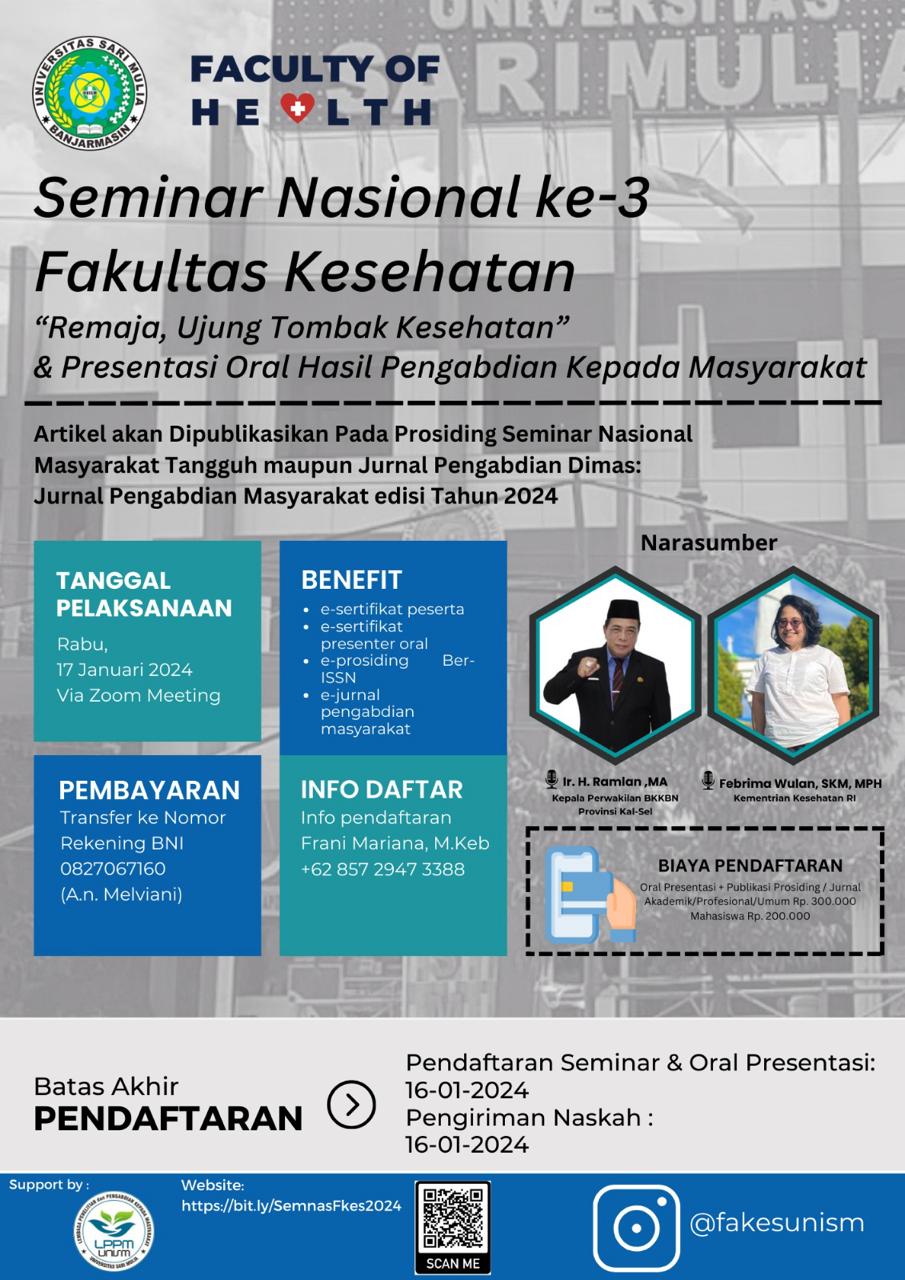K K1 Optimization: Effective Movements In Increasing Coverage And Reducing Risk For Stunting Prevention
Keywords:
Coverage, Risk, StuntingAbstract
Health stunting remains a serious challenge in global health development. Stunting, caused by inadequate nutrition, has long-term impacts on the physical, cognitive, and developmental growth of children. Despite efforts to prevent stunting, high risks in pregnant women continue to pose a significant obstacle. Low coverage of maternal health services (K1) is a critical aspect directly related to the risk of stunting. Pregnant women who lack adequate access during pregnancy have a higher risk of nutritional deficiencies and other health complications. This service commitment employs a combined approach of public health data analysis and partnership interventions. Data was collected through structured surveys, interviews, and observations to evaluate the effectiveness of the OPTIMASI K1 Movement. The strategy strengthens access, health education, and the role of health partners. Results: OPTIMASI K1 proved to be an effective movement with a significant increase in K1 service coverage. A strong partnership between healthcare providers and the community helped overcome barriers in reaching pregnant women. Additionally, the risk to pregnant women was substantially reduced, contributing to efforts in stunting prevention. Conclusion: The OPTIMASI K1 Movement has a positive impact on improving K1 coverage and reducing risks for pregnant women, thus proving effective in stunting prevention. Policy implications include the national expansion of this strategy to achieve broader outcomes in maternal health and child development
References
N. P. Ningrum, N. Hidayatunnikmah, and T. Rihardini, “Cegah Stunting Sejak Dini dengan Makanan Bergizi untuk Ibu Hamil,” E-Dimas J. Pengabdi. Kpd. Masy., vol. 11, no. 4, pp. 550–555, 2020, doi: 10.26877/e-dimas.v11i4.5616.
M. S. A. Eva Lestari*, Zahroh Shaluhiyah, “Intervensi Pencegahan Stunting pada Masa Prakonsepsi: Literature Review.” pp. 214–221, 2023.
A. Nuradhiani, “Upaya Pencegahan Stunting Sejak Dini melalui Pemberian Edukasi pada Ibu Hamil,” J. Gizi Kerja dan Produkt., vol. 3, no. 1, p. 46, 2022, doi: 10.52742/jgkp.v3i1.15452.
Ekayanthi D.W.N and Suryani P, “Edukasi Gizi pada Ibu Hamil Mencegah Stunting pada Kelas Ibu Hamil,” J. Kesehat., vol. 10, no. 3, pp. 312–319, 2019.
A. M. Arsyati, “Pengaruh Penyuluhan Media Audiovisual Dalam Pengetahuan Pencegahan Stunting Pada Ibu Hamil Di Desa Cibatok 2 Cibungbulang,” Promotor, vol. 2, no. 3, pp. 182–190, 2019, doi: 10.32832/pro.v2i3.1935.
W. Aprilia, “Perkembangan pada masa pranatal dan kelahiran,” Yaa Bunayya J. Pendidik. Anak Usia Dini, vol. 4, no. 1, pp. 40–55, 2020, [Online]. Available: https://jurnal.umj.ac.id/index.php/YaaBunayya/article/download/6684/4246
Kemenkes RI, “Pelaksanaan Pelayanan Antenatal Terpadu,” Heal. Stat., vol. III, no. 3, pp. 38–47, 2020.



